New pipes, road repairs and more: $240M in Panama City infrastructure projects in the works
PANAMA CITY — For City Manager Mark McQueen, the vision of Panama City becoming the "Premier City of the Panhandle" isn't a phrase just thrown around to sound nice: It's a promise to the residents.
It's a mission to rebuild the city to a higher standard after Hurricane Michael almost leveled it in October 2018.
As city officials have worked tirelessly to bring back lost community staples and lure new businesses, they also have been repairing and improving aging infrastructure damaged by Michael. City officials have sought out funding sources, such as the State Revolving Fund, Project RESTORE and the Hazard Mitigation Grant Program.
The various infrastructure projects in the works — totaling more than $240 million — include new pipe systems, upgrades to lift stations, road repairs and improved stormwater systems.
And they all will be completed in the next four years, McQueen said.
Mayor Brudnicki on infrastructure: Investing in infrastructure and a stronger Panama City | Guestview
St. Andrews' rebirth upon us: St. Andrews' renaissance is here: What projects to expect and when they're coming
After facing a rough four years, he said Panama City residents are heroes and deserve to have a safe, functioning community in which to thrive.
"They have withstood incredible adversity over the last four years. Hurricane Michael, Hurricane Sally, Tropical Storm Fred. We've had three tornadoes. We've had the largest wildfires in the history of the state of Florida. We had COVID 1, COVID 2," McQueen said. "And now we have economic pressures that are unfolding in terms of fuel costs and inflation, and yet our citizens continue to rebuild their homes. They continue to rebuild their businesses, they continue to have their kids go into school. And that shows their resiliency."
Infrastructure 'was poor ... and it got worse.'
It's no secret that the city's infrastructure before Hurricane Michael was not in the best shape, according to McQueen.
He uses adjectives of "aging" and "poor" to describe its former state throughout pockets of the 113-year-old city. Referencing a previous News Herald guest article written by Robert Hurst in 2020, he said the terracotta clay pipes in older parts of the city, such as Drummond Park and Millville, is similar technology to that used in the Babylonian Empire.
"That's how it was done back 70, 80, 90 years ago, when our water and sewer system was put in," McQueen said. "Our water lines have deteriorated. There's a lot of galvanized pipe that's out there."
In his words, when Michael hit Bay County in October 2018, the situation only got worse. Huge amounts of rainwater overwhelming systems, powerlines swinging in the wind, tree roots ripping pipes out of the ground — almost creating a scene out of an apocalypse movie.
Michael was directly responsible for about $25 billion in damage in the United States, according to the National Hurricane Center. McQueen said after seeing the immense destruction, city and county officials jumped into action to help residents and start the years-long journey toward rebuilding.
"Hurricane Michael significantly damaged the city's infrastructure and, certainly, we've had an incredible increase in the volume of water and sewer lines that have been either breaking or collapsing since Hurricane Michael," McQueen said.
City officials hired an engineering firm to assess the infrastructure, looking at four major areas — damage to water lines, sewer lines, stormwater lines and roads.
From there, McQueen said they were able to draw up a heat map to provide graphical representations of the damage by using a range of colors.
"The heat map revealed the most acute areas of all four, having deteriorating water, deteriorated sewer, deteriorated stormwater and deteriorated roads," McQueen said. "From that, we developed our strategy for how we were going to address those shortfalls and we used that analysis to become the basis for us to seek out funding in different ways."
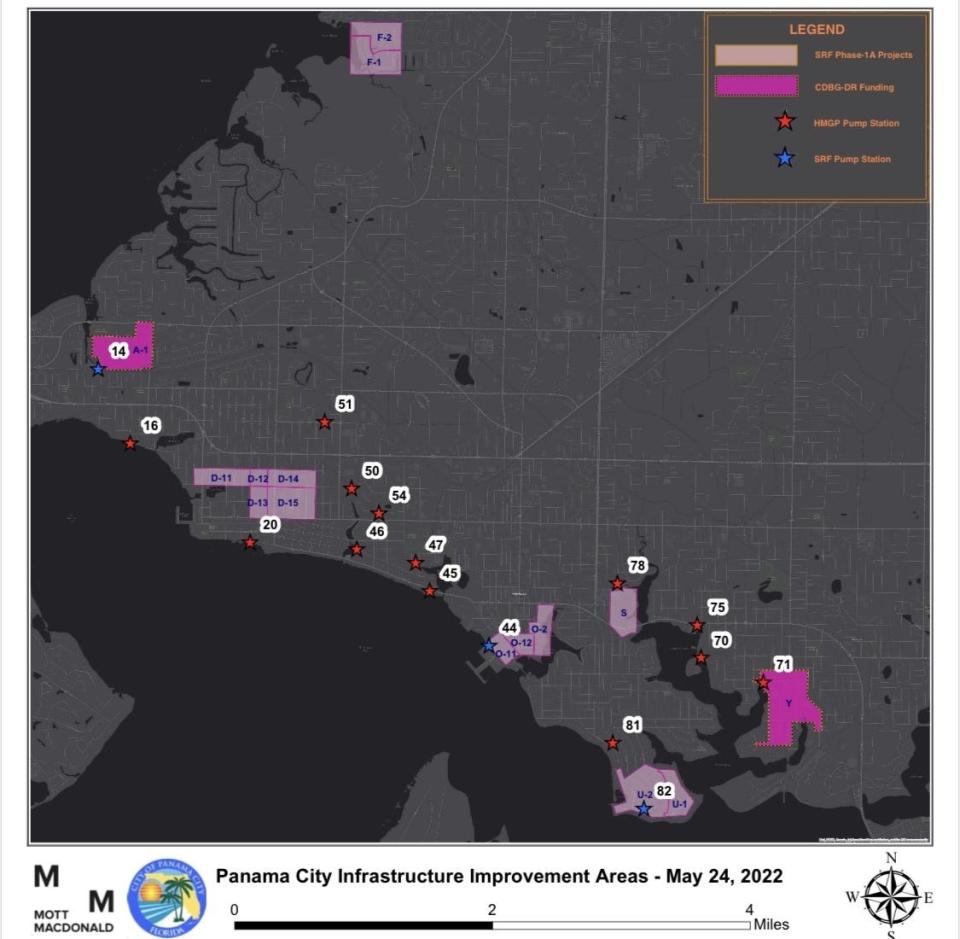
State Revolving Fund loan
State Revolving Funds (SRF) are loans from the Department of Environmental Protection and are made up of three programs: Clean Water State Revolving Fund, Drinking Water State Revolving Fund and State Revolving Fund Management.
The process of seeking out and qualifying for the low-interest loans happened right after Hurricane Michael.
Panama City has received SRF Loans of $73,411,597 and $39,971,236 to replace and repair water and sewer infrastructure. The loan agreements call for 25% of the loans to be forgiven with the remaining balances to be repaid at near 0% interest over a 20-year period.
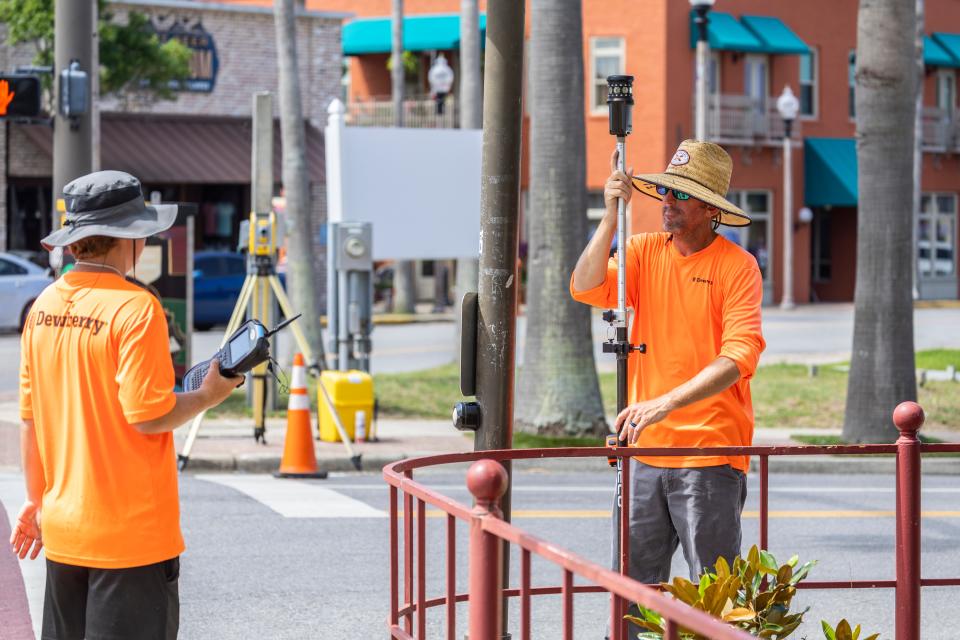
McQueen said city officials have four years to use the funds for water and sewer lines and then start repaying the loans, which he believes will total about $85 million.
McQueen said engineers are drawing up project designs which city officials expect to see in the next four to six months. Start dates for construction have not been determined.
The SRF loans will pay "for not only the replacement of the water line or the sewer line, but also the street asphalt above it, so that's why the city is wanting to ensure ... that we get everything that needs to go under that road at one time," McQueen said. "So we don't have to go back and cut into the road to repair something later."
Project RESTORE
Project RESTORE, funded by the Florida Department of Economic Opportunity, targets repairs of vital infrastructure and projects to prevent flooding.
Of the RESTORE funding, Millville will receive $18,986,552 and Drummond Park will get $20,489,644. The Drummond Park projects will repair 2.4 miles of water lines, 2.4 miles of stormwater lines and 3 miles of sewer lines. On May 24, city commissioners approved six engineering firms to work on different portions of the project simultaneously to speed up the process.
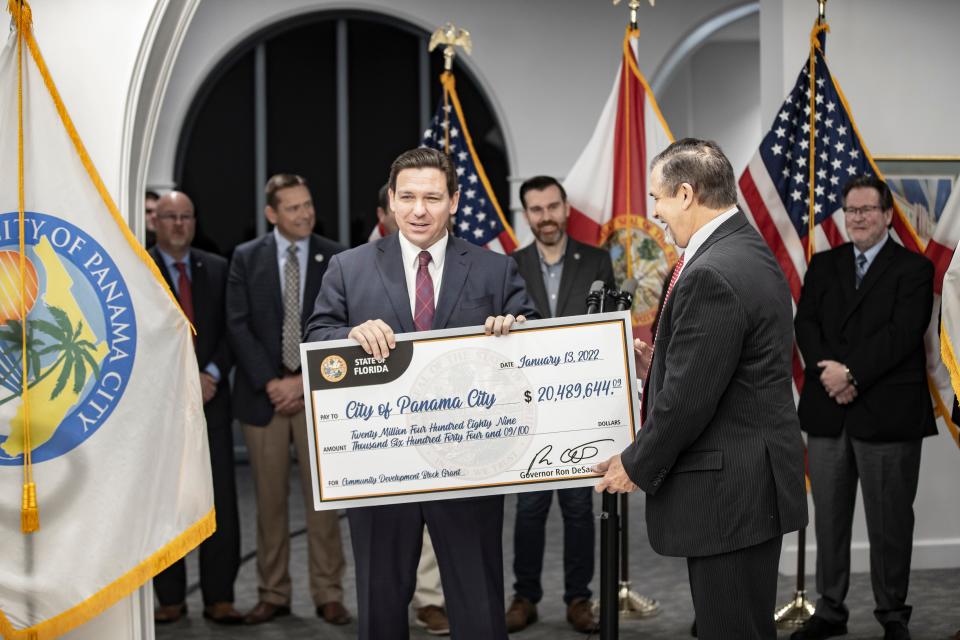
Here is where the $20.4 million will be used in Drummond Park:
Road, storm and sewer: Mound Avenue, Grant Avenue, Shepard Street, Peters Drive, West 22nd Place, Whiting Circle, Drummond Avenue, West 22nd Plaza
Water and road overlay: High Avenue, Peters Drive
Road, storm, water and sewer: Michigan Avenue, Drummond Avenue, West 21st Street, West 21st Plaza, Pritchard Street, Burnham Way
Road overlay: West 22nd Street, Mound Avenue, West 21st Place, Drummond Avenue
Road: West 22nd Court, West 21st Street
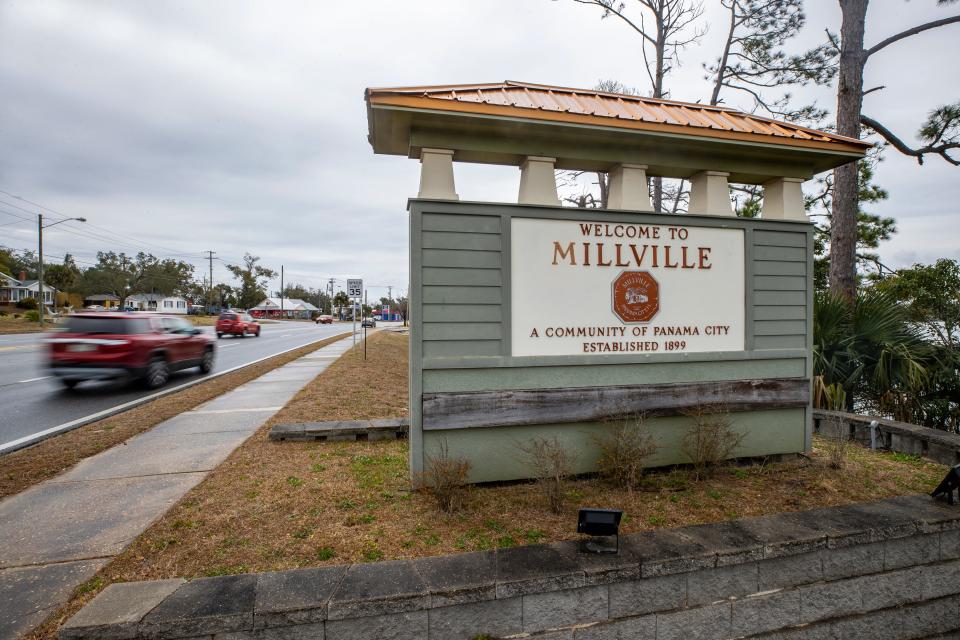
City officials said they expect the engineering work on the Drummond Park project to be completed in the next four to six months, with construction starting right behind and taking eight to 10 months.
In Millville, 3.96 miles of water lines, 3.11 miles of sewer lines and 0.16 miles of stormwater lines will be repaired.
Here is where the $18.9 million will be used in Millville:
Road, storm and sewer: First Place, First Plaza
Water and road: North Church Avenue, East Second Street, First Plaza, Cherry Street, Nelson Street, North East Avenue, Kraft Avenue, Everitt Avenue
Road, storm, water and sewer: East Second Street, Spring Avenue, North Church Avenue, North Gray Avenue, North East Avenue, First Plaza, Cherry Street, East First Court, North James Avenue, Kraft Avenue
Sewer only: Bob George Park, lots along East Second Street, lots along North Gray Avenue and North East Avenue, lots along Everitt Avenue
Hazard Mitigation Grant Program
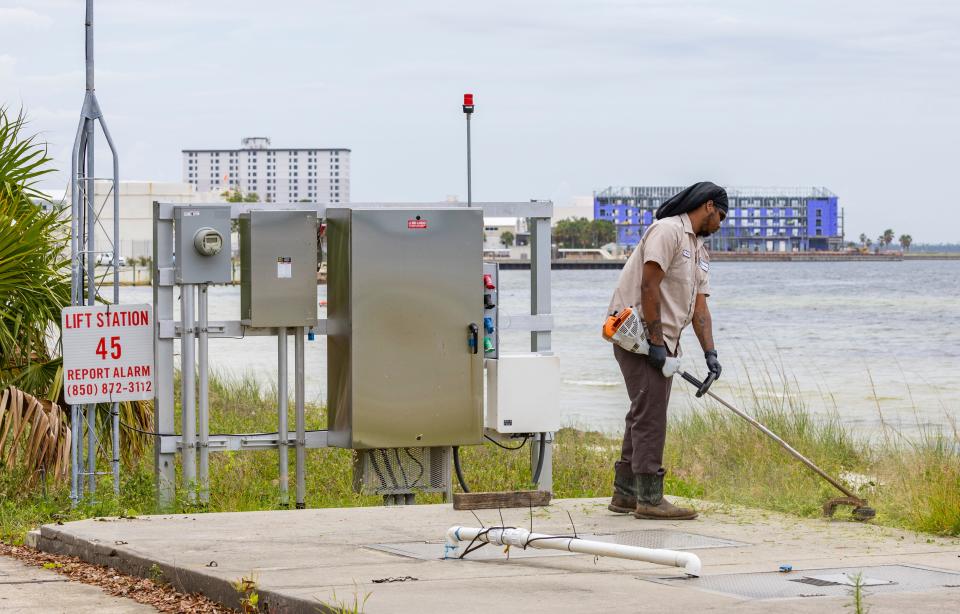
The Hazard Mitigation Grant Program is a Federal Emergency Management Agency (FEMA) program which provides funding to state and local governments for hazard mitigation plans and rebuilding in a way that reduces future disaster losses. The grant funding is available after a presidentially declared disaster, such as Michael in 2018 or Hurricane Sally in 2020.
City officials hope to have the engineering designs completed in four to six months for the repair or replacement of 13 critical lift stations: Nos. 16, 20, 45, 46, 47, 50, 51, 54, 70, 71, 75, 78 and 81.
Once engineers have a cost estimate for the project, the Florida Department of Emergency Management and FEMA will be tasked with approving that amount. The initial total estimate for the project, including engineering and construction, was $24,653,116.
Building the structure of a premier city
Through the rebuilding efforts, McQueen said city officials have prioritized the safety and security of residents, their property and the environment.
McQueen said the next three to four years will be the most pivotal, with a host of development and changes that residents are going to appreciate.
"It'll be a better community for all of our citizens and for those that come and visit here. We're a first world nation in the 21st century, we have technology on our side and now we have all this funding," McQueen said. "We can have a better community and I really believe that all of this is part and parcel to our ability to create Panama City as the premier city in the Panhandle of Florida."
This article originally appeared on The News Herald: Panama City getting $240 million in infrastructure projects

